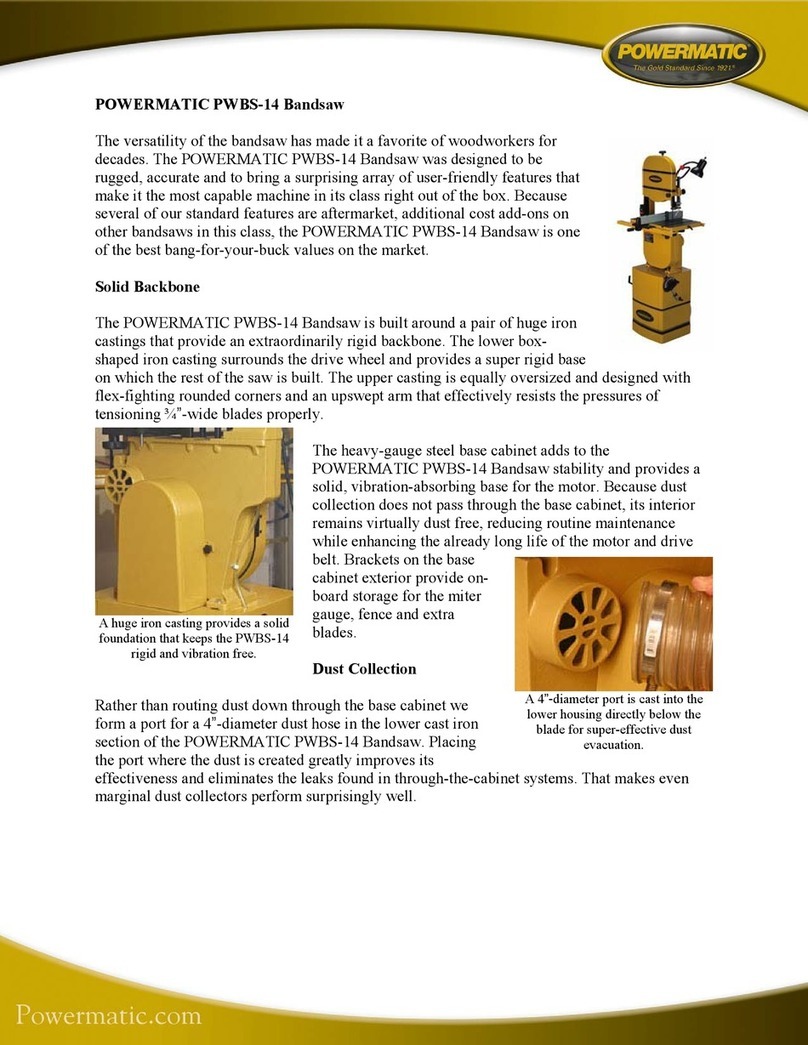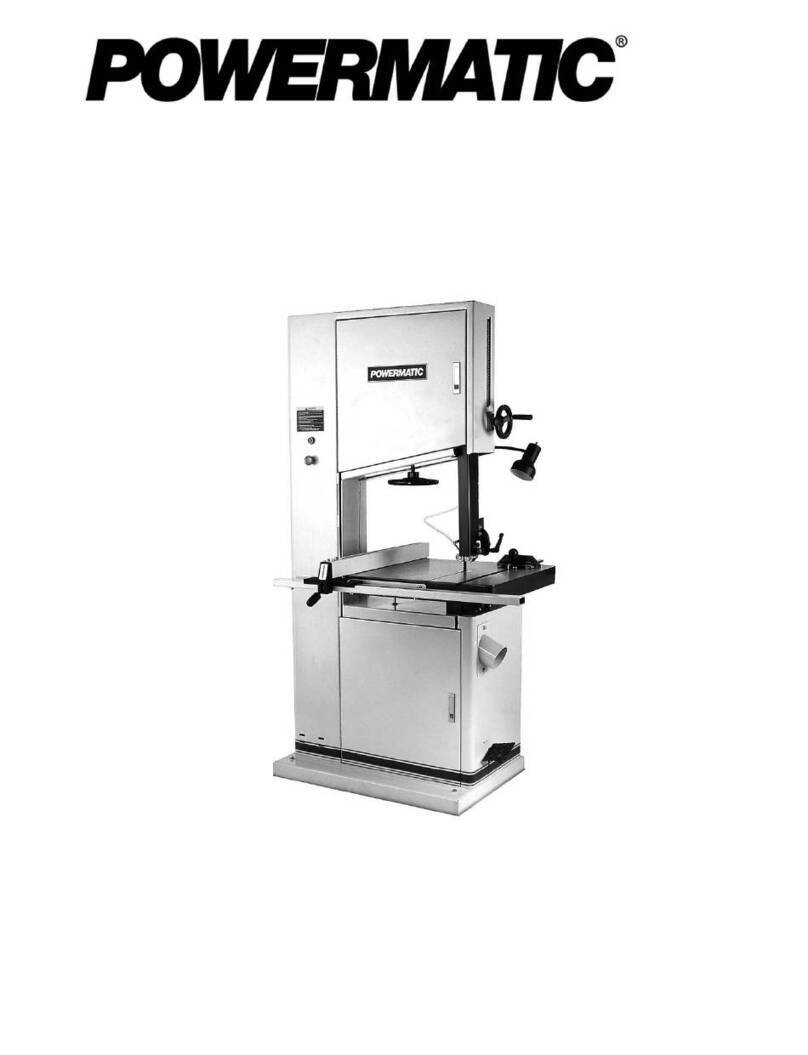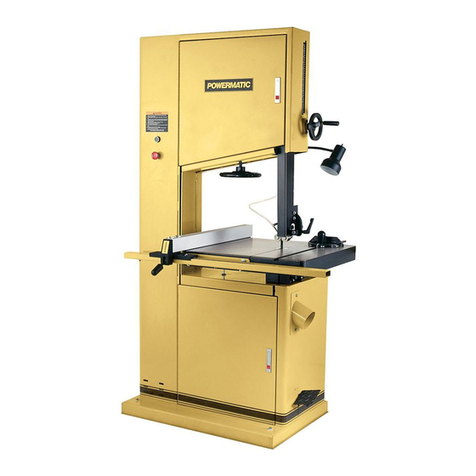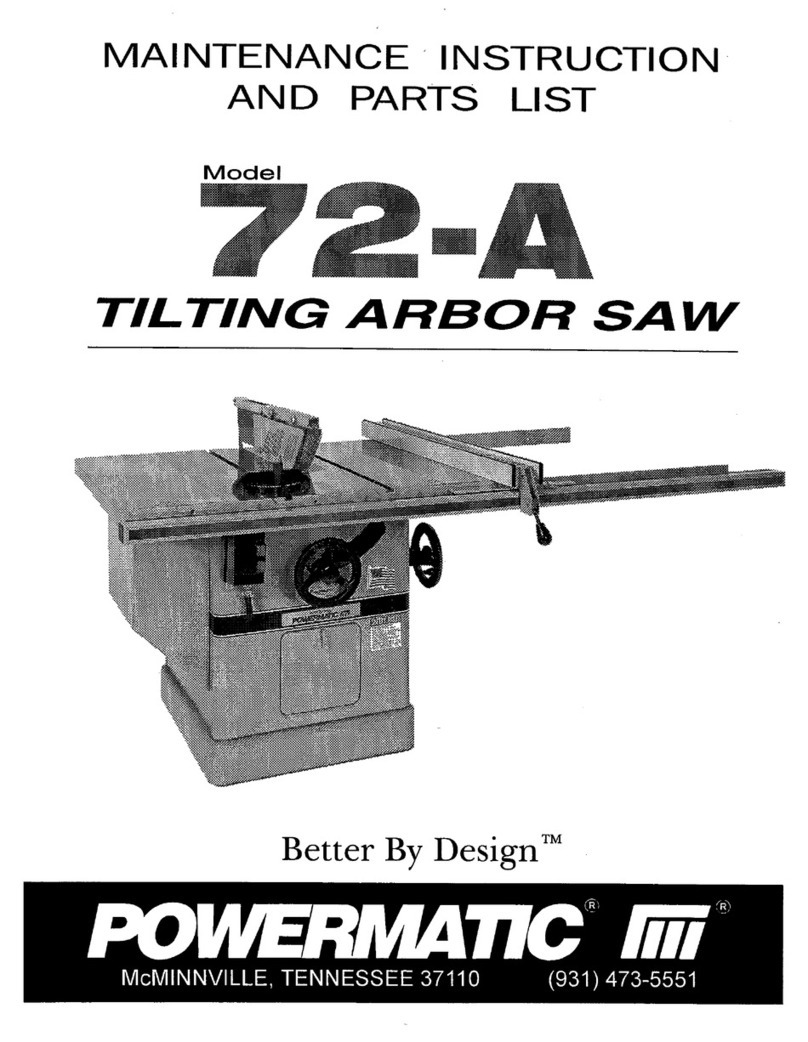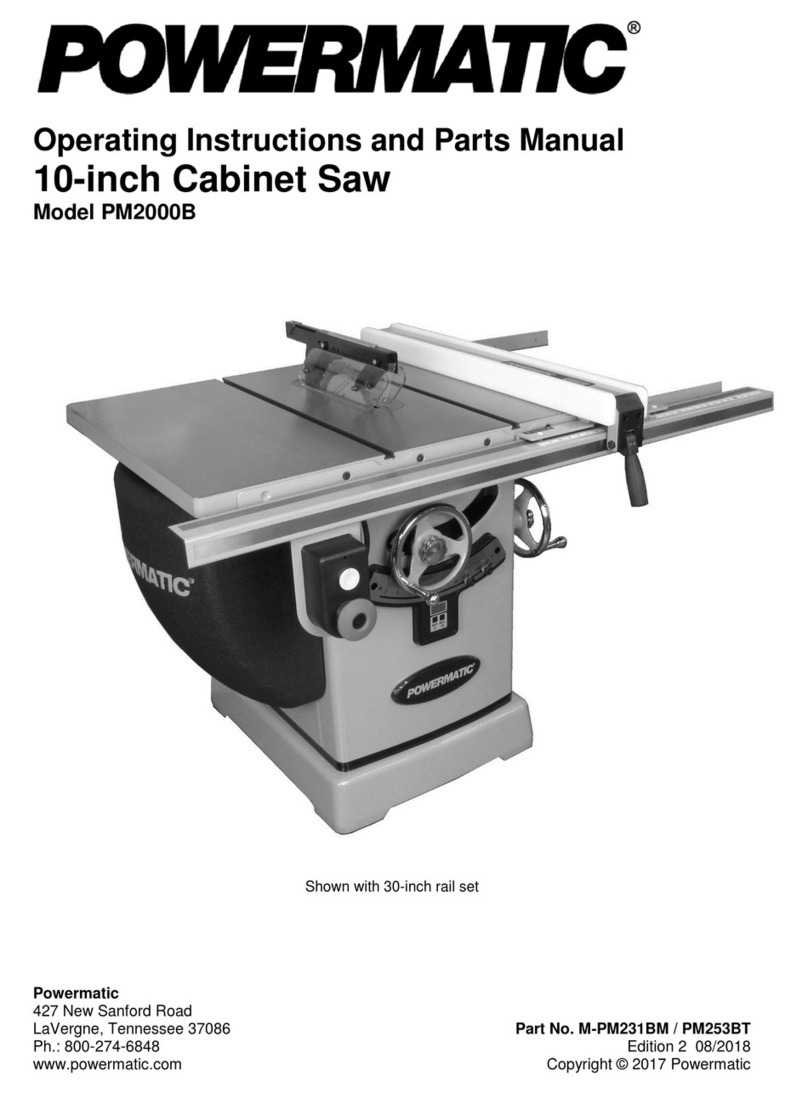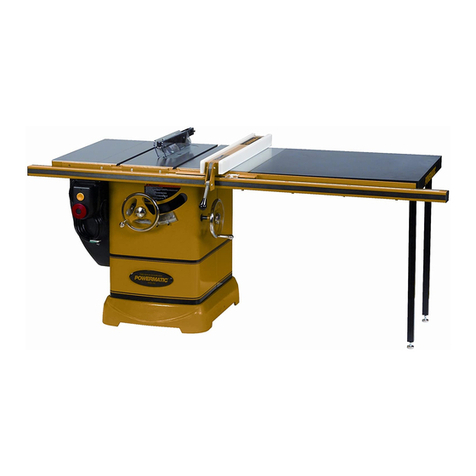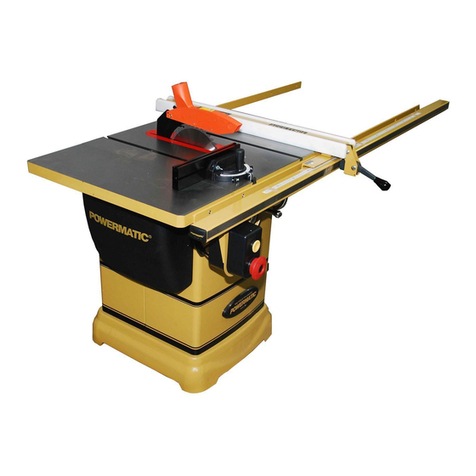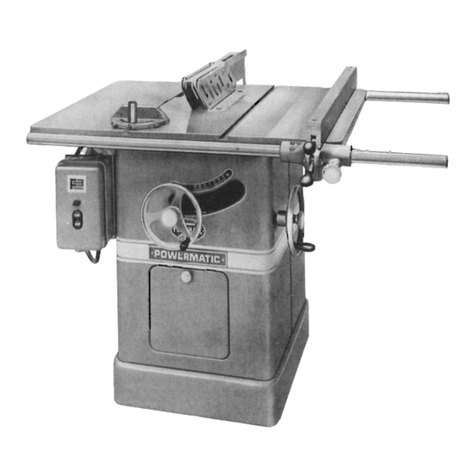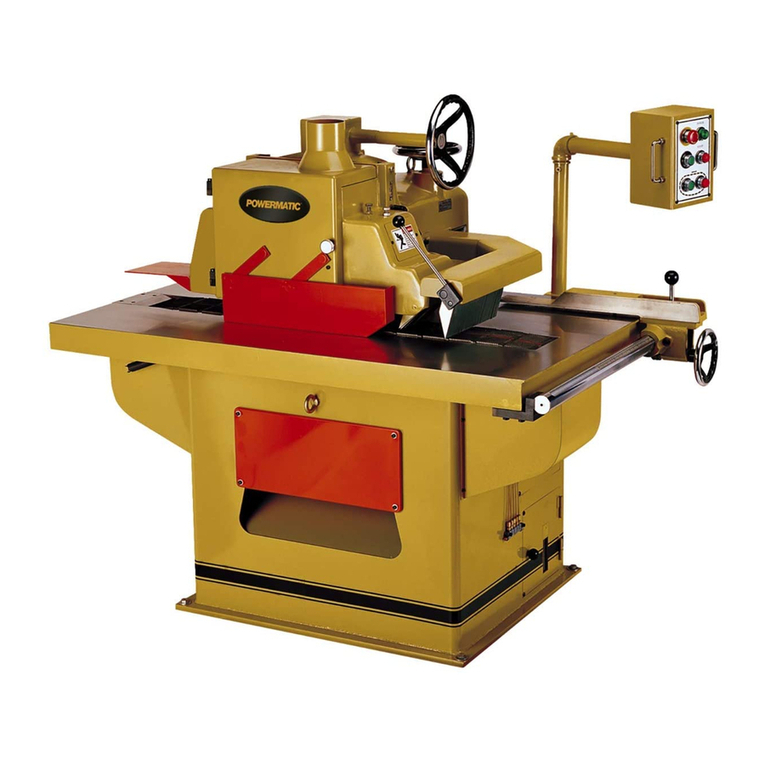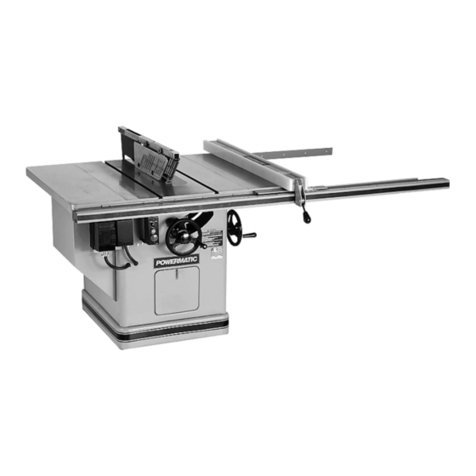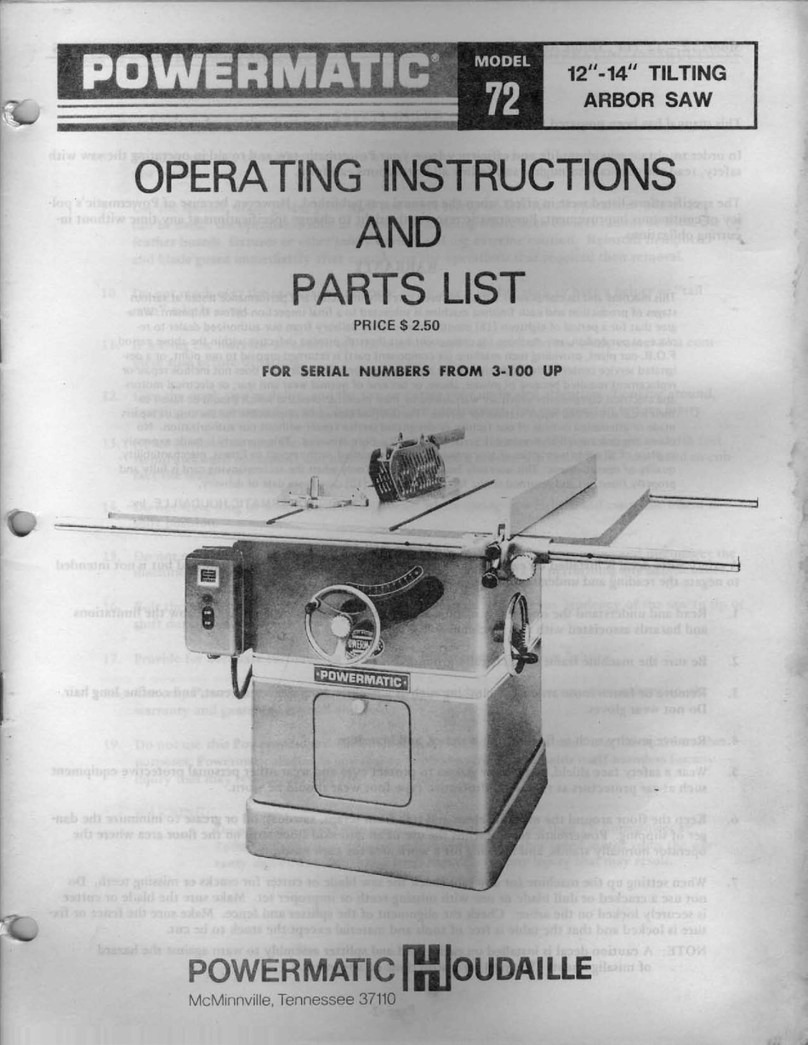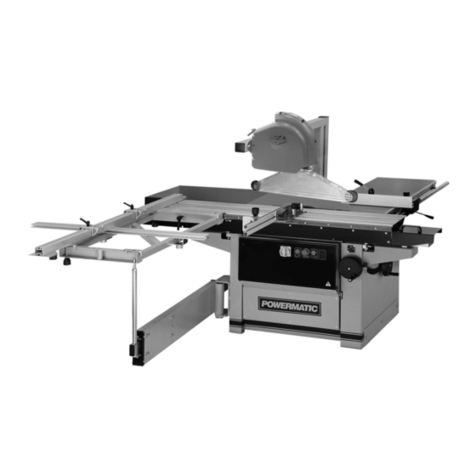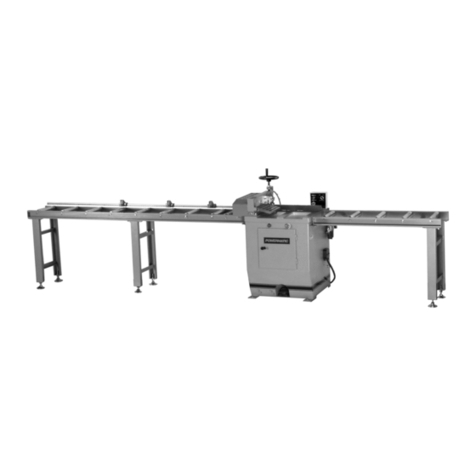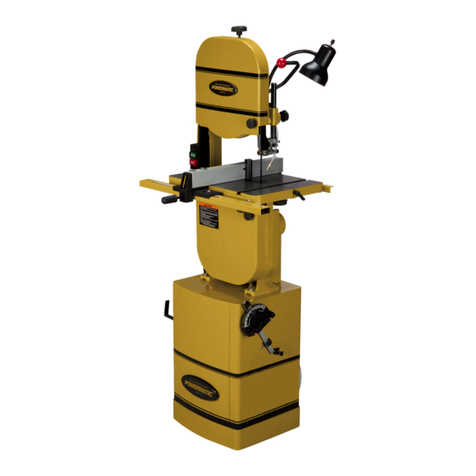
10
INSTRUCTIONS & PROCEDURES
FOR CIRCULAR SAW
OPERATIONS
GENERAL INSTRU TIONS
1. Familiarize yourself with the location and
operation of all controls and adjustments and the use
of accessories such as the miter gauge and rip fence.
2. Serious injury can result from kickbacks
which occur when a work piece binds on the saw blade
or binds between the saw blade and rip fence or other
fixed object. This binding can cause the work piece
to lift up and be thrown toward the operator. Listed
below are the conditions which can cause kickbacks:
a. Confining the cutoff piece when crosscut-
ting or ripping.
b. Releasing the work piece before complet-
ing the operation or not pushing the work piece
all the way past the saw blade.
c. Not using the splitter when ripping or not
maintaining alignment of the splitter with the saw
blade.
d. Using a dull saw blade.
e. Not maintaining alignment of the rip fence
so that it tends to angle toward rather than away
from the saw blade front to back.
NOTE: Caution decal on guard and splitter as-
sembly.
f. Applying feed force when ripping to the
cutoff (free) section of the work piece instead of
the section between the saw blade and fence.
Use push sticks or push blocks, Figure 13, for
narrow, thin, or short work.
g. Ripping wood that is twisted (not flat), or
does not ha e a straight edge, or a twisted grain.
FIGURE 13
3. To minimize or pre ent injury from kickbacks:
a. A oid conditions listed abo e.
b. Wear a safety face shield, goggles, or
glasses.
c. Do not use the mitre gauge and rip fence
in the same operation unless pro ision is made
by use of a facing board on the fence so as to
allow the cutoff section of the workpiece to come
free before the next cut is started (See pg. 12
for instruction on cross-cutting).
d. Check the operation of the anti-kickback
pawls before starting a cut. If the pawls do not
stop the re erse motion of a workpiece, resharpen
all the points.
e. Where possible, keep your face and body
out of line with potential kickbacks including
when starting or stopping the machine.
4. Dull, badly set, improper, or improperly filed
cutting tools and cutting tools with gum or resin ad-
hering to them cause many of the tilting arbor saw
accidents. Ne er use a cracked saw blade. The use
of a sharp, well maintained, and correct cutting tool
for the operation will help to a oid injuries.
5. Support the work properly and hold it firmly
against the gauge or fence. Use a push stick or push
block when ripping short, narrow (6" width or less), or
thin work. Use a push block or miter gauge hold-
down when dadoing or molding.
6. For increased safety in crosscutting, use an
auxiliary wood facing attached to the mitre gauge us-
ing the holes pro ided, Figure 14.
FIGURE 14
7. Ne er use the fence as a length stop when
crosscutting. Do not hold on to, or touch, the free
end or cutoff section of a workpiece. On thru sawing
operations, the cutoff section must NOT be confined.
8. Always keep your hands out of the line of the
saw blade and NEVER reach back of the cutting blade
with either hand to hold the workpiece.
9. Be el ripping cuts should always be made
with the fence on the right side of the saw blade so
that the the blade tilts away from the fence and mini-
mizes the possibility of the work binding and the re-
sulting kickback.
10. Use the mitre gauge on the right-hand side of
the saw blade when doing miter or compound miter
cuts to pro ide more hand clearance and safety.
